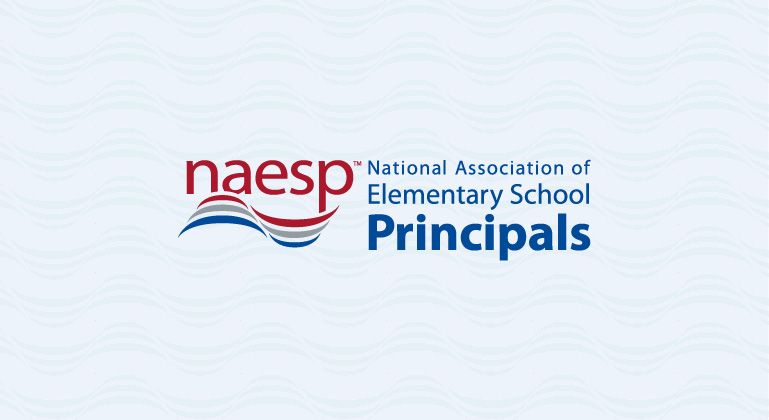NAESP Releases Results of National Survey Of Principals Regarding COVID-19
CONTACT: Kaylen Tucker, NAESP
Email: ktucker@naesp.org
Phone: 703-518-6257
Alexandria, VA—March 31, 2020—The spread of coronavirus (COVID-19) has created unprecedented challenges for K-12 schools amid school closures across the country, according to a survey of principals conducted by the National Association of Elementary School Principals (NAESP). The ripple effect of these closures has left principals and their teams working around the clock to support school staff, implement digital learning procedures, and provide student meal pick-ups and delivery.
Earlier this month, in response to the COVID-19 pandemic, NAESP conducted a nationwide survey of principals to gather more information about what’s happening on the ground in schools, how principals are responding, and what additional resources they will need going forward. The survey was done in conjunction with a survey conducted by AASA, the School Superintendents Association. The two surveys provide a snapshot of the challenges district and school leaders are facing with this crisis and how they’re responding. The NAESP survey, conducted from March 17-25, received 639 total responses from principals in all 50 states.
“School principals are leaders of their schools and leaders in their communities,” says NAESP Executive Director L. Earl Franks, Ed.D., CAE. “In challenging times, communities look to principals to lead. It’s essential that schools have the resources to support students and staff and provide high-quality instruction during the coronavirus pandemic. We felt it was important to hear from principals directly about what is happening on the ground during this crisis. The results from our nationwide survey are clear: Schools need additional resources to provide distance learning and to address gaps in education technology access.”
Key Findings
Respondents represent schools in urban, suburban, and rural communities with school populations ranging from fewer than 200 students to more than 750. Here are the key findings:
- Scaling Up Education Technology: 82 percent of respondents said they were not sure how their district plans to scale up education technology services to deliver curriculum and instruction during an extended COVID-19 outbreak.
- Delivering Instruction Virtually: Respondents noted that a mix of barriers existed that prevent their school districts from going to a fully online learning modality. Topping the list were internet access at home (72 percent), lack of instructional capacity for online learning (36 percent), limited 1:1 device programs within their grades (35 percent), and no 1:1 device programs at all (26 percent).
- Creating Equitable Learning Opportunities: In schools with students who don’t have access to the internet or digital devices at home, 63 percent of respondents are providing book- or paper-based learning opportunities, 26 percent are providing hotspots or WiFi devices, 19 percent said they work with ISPs to make affordable connectivity available, and 16 percent said they communicate with community partners with internet access to facilitate learning.
- Providing Meals to Students: Many students rely on school meals for their daily nutrition, which poses a problem when schools close unexpectedly. Just over 87 percent of respondents said their school has a plan in place to continue to serve students meals amid school closures.
- Calculating the Costs of COVID-19: When asked what costs their school will incur in responding to COVID-19, the top answers were costs associated with cleaning the schools (68 percent), costs related to providing meals to students off-site (57 percent), costs related to printing and disseminating paper learning materials (56 percent), and costs related to teacher pay (47 percent).
Common Concerns Among Educators
Given the opportunity to elaborate on several of the survey questions, respondents—no matter their school population and demographics—shared common concerns about maintaining an equitable learning environment for students.
- “Our district is large and covers areas that are affluent and could most likely go online pretty easily to homes where there is barely electricity,” said one respondent from South Carolina. “To keep things consistent, we are all doing paper packets.”
- Another respondent, from Maryland, said, “The gaps become bigger between our African American, Hispanic, and special education populations as they have less ability to work with parent support and/or internet access at home.”
- To overcome issues with equity, one respondent focused on unconventional learning opportunities. “Until we can ensure that our students with special needs can be served, our connections with families are focused on optional resources they can access,” said a respondent from Idaho. “We’re encouraging some basics: reading, writing, playing outside, riding bikes, hiking, playing board games, and baking in the kitchen, for example.”
- Though not asked directly in the survey, respondents showed concern for the mental well-being of members of their school communities. “I am concerned about the extent of mental health needs of families and students,” one respondent, from Alabama, said. “Families not being able to work to provide for their families due to many businesses/industries shutting down causes a lot of stress. I worry about our elementary students having to remain at home where there is instability. We are a safe haven for many of our students where we provide food, shelter, and love.”



